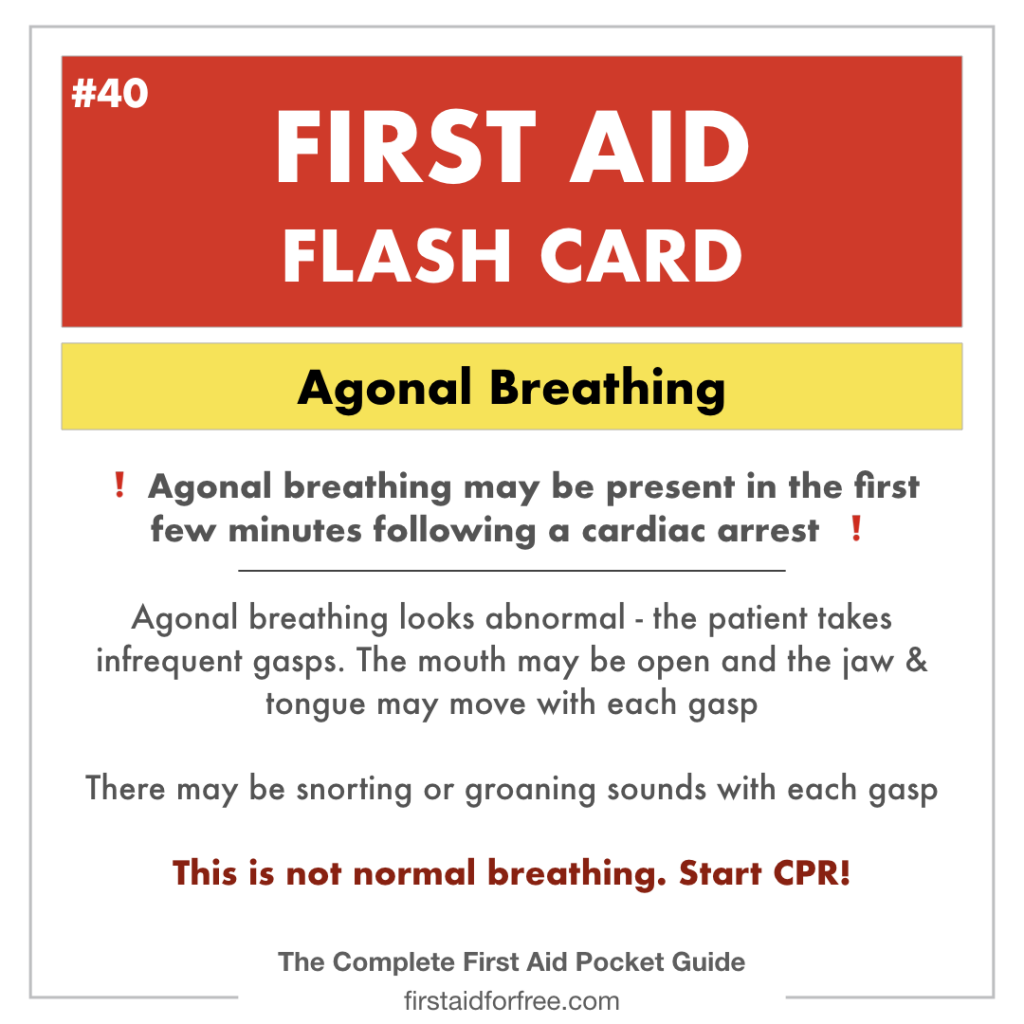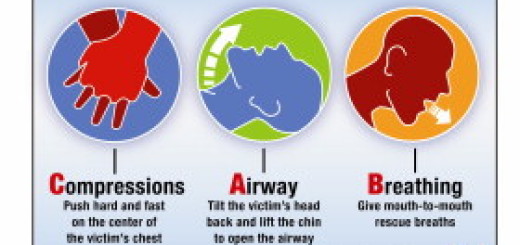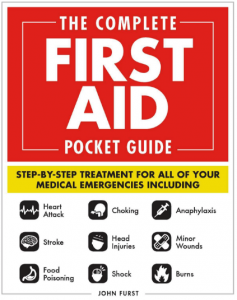How to Recognize Agonal Breathing
Agonal breathing occurs in the first few seconds to minutes following a sudden cardiac arrest. First aiders and first responders should be trained in how to recognize agonal breathing. Up to 40% of cardiac arrest patients may display evidence of agonal breathing.
Current CPR guidelines advise checking for the presence of normal breathing for no longer than 10 seconds.
Agonal breathing can be off-putting for rescuers as the patient may be moving and appear as if they are still breathing. However, it’s important to ignore agonal breathing and commence CPR as soon as possible.
Recognizing Agonal Breathing

Agonal breathing is an abnormal pattern of breathing. The following features may be present:
- The breaths are slow and irregular
- The patient’s mouth and neck move with each breath
- The chest does not rise and fall – the breaths are ineffective
- There are abnormal sounds associated with each breath – e.g: groaning or gurgling
- The breathing pattern slows
Unfortunately, agonal breathing is not often taught to students on first aid & CPR courses. This may result in delays in commencing resuscitation if rescuers are unsure if the patient is breathing normally or not.
If you are in any doubt about whether the patient is breathing normally – start CPR!





